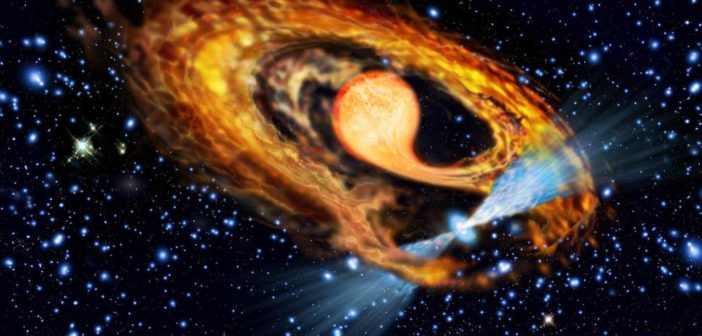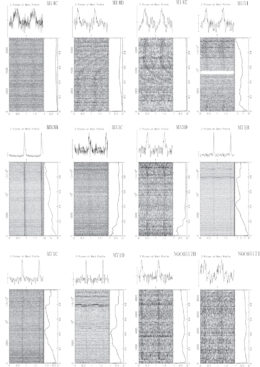What’s going on at the largest filled-aperture radio telescope in the world? The Five-hundred-meter Aperture Spherical radio Telescope (FAST) has discovered a new assortment of highly magnetized, pulsating neutron stars located beyond the main disk of the Milky Way.
Globular Cluster Treasure Troves

Diagram of a pulsar, a rotating neutron star with a strong magnetic field. [NASA/Goddard Space Flight Center Conceptual Image Lab]
But pulsars also exist beyond the relatively nearby disk of the Milky Way! A particularly interesting place to search for them is inside the globular clusters — compact, old clusters of stars that are bound together in spheres — that orbit our galaxy.
Pulsars in globular clusters are often quite exotic. The ones we’ve detected in globular clusters include some of the fastest spinners, eclipsing binaries, triple systems, and pulsars in eccentric orbits with their companions. By identifying more objects in this array of interesting systems, we can learn about the range of outcomes produced by stellar evolution in old star clusters.
The challenge? These globular cluster pulsars are far away and often faint. We need large and sensitive radio surveys to hunt for these mysterious bodies — and this is where FAST comes in.A Giant Telescope on the Hunt
FAST, an enormous radio telescope built into the landscape in southwest China, launched its globular cluster pulsar survey in 2018. Since then, this telescope has been searching for signs of faint, pulsating neutron stars within the Milky Way globular clusters that lie in the FAST sky.
In a new study led by Zhichen Pan (NAO, Chinese Academy of Sciences), a team of scientists reports the most recent results of this survey, which include:
- the discovery of 24 new pulsars in 15 globular clusters, roughly doubling the number of globular cluster pulsars known in the FAST sky
- the first-ever detections of pulsars in globular clusters M2, M10, and M14
- the discovery of several new black widow and redback pulsars — binary systems in which a very low-mass star orbits close to a millisecond pulsar, as the pulsar gradually consumes its companion
- additional measurements of previously discovered pulsars
The new discoveries from these globular clusters are primarily pulsars in binaries — possibly due to a low rate of encounters in these clusters, which would allow binaries to survive for longer.
The results presented by Pan and collaborators demonstrate that FAST’s high sensitivity exceeds that of previous surveys and shows great promise for the future. We can expect our sample of globular cluster pulsars to keep growing as FAST continues its hunt alongside other telescopes. Stay tuned!
Citation
“FAST Globular Cluster Pulsar Survey: Twenty-four Pulsars Discovered in 15 Globular Clusters,” Zhichen Pan et al 2021 ApJL 915 L28. doi:10.3847/2041-8213/ac0bbd


